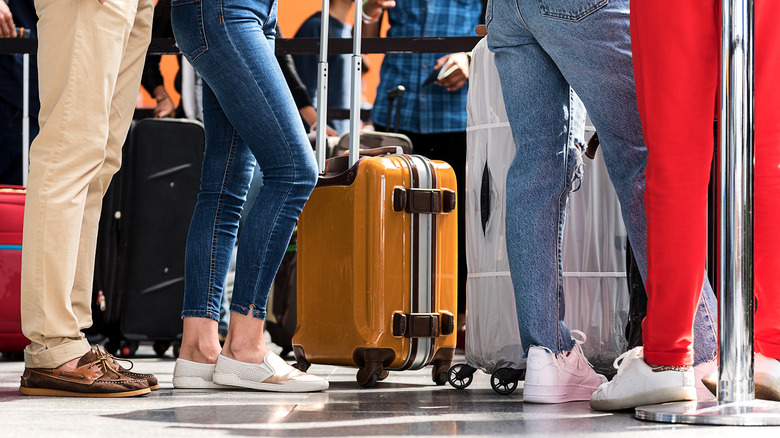Issue of Airline Fashion Policy
Tiya Antony
Fashion News Editor
Airline fashion issues circulate commonly on social media and news outlets. Especially in America where freedom of expression is valued, these situations often cause people to be frustrated. There have been many instances of passengers being asked to cover up ‘revealing’ or tightly fit outfits.
The airline deregulation act was passed in 1978. Prior to this act, passengers in America had to pay a lot for airplane tickets and dressed well, such as in suits and dresses. Nowadays, people are easily able to get airline tickets for cheap prices and travel is common. Athleisure and comfort are highly valued so people traveling often wear comfortable and causal items like jeans, t shirts, and sweatshirts.

Airlines are considered private entities, and the first amendment does not apply. However, airlines do have the responsibility of following the dress code in an unbiased and fair manner. This is why some consumers are also worried that a disproportionate amount of airline fashion issues is targeted towards women and wish for the situation to be looked into.
People are often unaware of this but when you buy a plane ticket, the passenger agrees to adhere to airline policy. Some airlines do not have an official dress code but there could be mention of prohibited articles of clothing or vague statements of dressing appropriately.
Without properly written dress codes, the meaning of ‘appropriate’ attire is vague and subjective. Additionally, different airlines are catering to different people and occasions, such as Hawaiian Airlines specifically stating the prohibition of wearing bikini bottoms or speedos on their aircraft. There could also be cultural differences between the airline and the passengers, which can lead to more tensions regarding airline fashion.

Airlines are justified in their maintenance of clothing for maximum comfort on the flight. Employees want to solve the issues on ground before taking off because a t-shirt with a slogan could be offensive to another passenger and this could cause aggression in the air. Airline employees want to provide a safe and comfortable experience for everyone on the flight. Moreover, airlines are considered about emergency and safety of all passengers. For example, it would be beneficial for passengers to consider footwear options in case of an emergency because it would be advantageous to wear sneakers or closed toe shoes compared to flip flops in an emergency situation.
Clothing issues can cause consumers setbacks in flight delays or money loss. Consumers should be cautious because if you are denied a flight for clothing, this will lead to additional out of pocket expenses for a new ticket because travel insurance usually does not cover these situations. Consumers can also consider their own fashion choices as a means to respect all other passengers and be good international citizens. This prevents the chance of having plane delays in boarding and takeoff, due to clothing related issues. Although there are various perspectives regarding airline fashion policies and enforcement, there are valid considerations from the perspective of consumers and airlines in regards to freedom and safety.
Contact Tiya at antonyti@shu.edu

